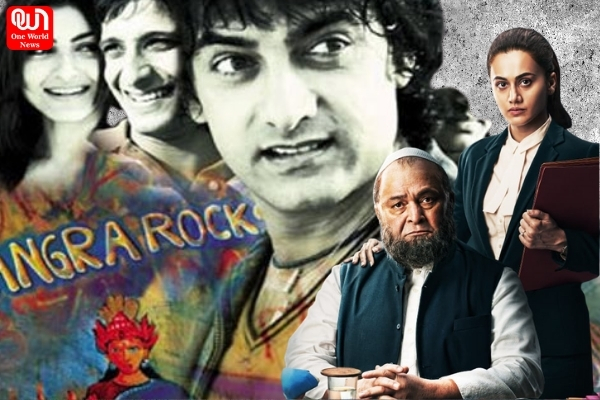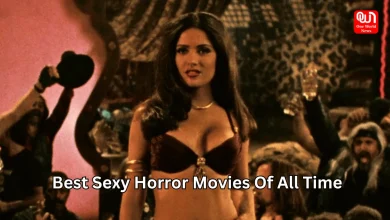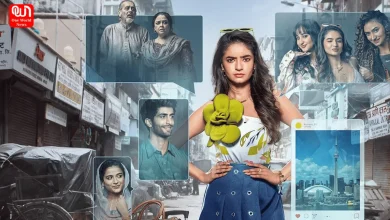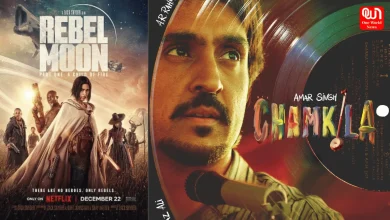
People may say everything is political but you need to know the anatomy of Political Cinema
‘Cinema is always a political art. at the end’ – Pablo Larrain
Well, we know, even personal is political and each cinema does get us close to the political art. But what is political art, and what type of films contribute to political cinema has been a mystery. There are multiple definitions of political cinema available yet every definition is particularly born out of the personified meanings of different artists and filmmakers. Let’s look at each of them and explore the examples of political cinema in the Indian Context.
But before anything, when we say, everything is political, it can essentially mean that our choices are influenced by the position in the society, which can not be used as a proper cursor to define political cinema. So, in general, the films that are about dissent of any social evil can be known as political cinema.

The elements of political cinema can look like –
– Films that will show the oppression, excess of power, and control over one community/ person on others.
– This oppression can be in any form, on and by any other person. It can be an individual over another, a class over another, a religion over another, a race over another, and so on and so forth.
– This oppression can be in any form and is not perfected to be of an official nature. But it should not be coming out of a space of responsibility. Like the power relation that comes because of a position of responsibility, e.g. Parents and children, teacher and student can not be put in the arena of political cinema as this position of authority is given and defined.
– Any control that is exceeding the sphere of responsibility, e.g. husband controlling the wife, which the patriarchal society justifies but is not really in the sphere where control is in the sphere of responsibility.
So, let’s discuss different Indian examples of political cinema, along with different formats. We have tried to discuss modern examples too so that you can get a better idea.
Read More: 5 Bollywood stars with big roles in Hollywood movies
Early Political Films
In India, the history of political films can be traced from the films made during the 1960s, the ‘New Wave of Indian Cinema’ where directors like Satyajit Ray, Manikaul, Basu Chatterjee, Mrinal Sen, Ritwik Ghatak, and Shyam Benegal. The films made during that time were fresh and critical of some other socio-political situation. Films like Sara Akaash, Ankur, Do Bigha Zameen, Mandi, or Ray’s Apu Trilogy, Ashadh Ka Ek Din (1972), Duvidha (1974) were, if not intentionally political, had instances of politics.
Political Films that trace experiences through a person’s life
Films like Chaitanya Tamhane’s ‘Court’ or Nandita Das’s ‘Manto’ can be an example of films, that reflect the story or a person’s life, experience, and perspective in light of a certain political situation. In Court, it is the UAPA act that is discussed, in Manto, it is the life of people during independence through Manto’s lens. And both of these films are political.
Exploration of political incidents
In the Indian context, films like ‘Rang De Basanti’ that reflects the parallel of freedom movements or ‘Shanghai’ by Deebakar Banarjee, based on the investigation of a social activist’s death, or ‘Firaaq’ by Nandita Das which is based on the Gujarat Riots.
Films that reflect upon the oppression directly or indirectly
Political films arise with the idea of oppression, and even entirely work fiction can be political. Anubhav Sinha’s films like ‘Article 15’ based on the caste divide or ‘Mulk’ that is based on the religious divides are certainly in the category of political films. Then Hansal Mehta’s ‘Shahid’, ‘Aligarh’ or ‘Omerta’ can be political films.
Films that are made with the intent of leading a political propaganda
While some films are political, others can be deliberately made to feed the masses with particular information and the best example of this can be known with how in the last decade, we witness period films like ‘Padmavatt’, ‘Kesari’, ‘Tanhaji’, ‘Manikarnika’, ‘Shikara’ and many more with the idea of glorifying Hindutva. And while these were subtle instances, films like Accidental Prime Minister, PM Narendra Modi or Thackeray can be seen as films that might lead to propaganda.
Films that are seen as political but are actually not
Then there can be films that can be seen as political but are not really so. The films like Section 375, Pink, Thappad, etc might look political but are not really so. They are not really reflecting upon the side of oppression but are societal.
Films that are about politics but are not political
Films like ‘Rajneeti’ or ‘Raanjhanaa’ are films centered around politics with each character being a politician but these films have absolutely nothing to do with politics.
So, this was out analysis of political cinema. I hope you have got some idea of political Cinema. Let us know in the comments if there is anything else you would like to add to this discussion.
Have a news story, an interesting write-up or simply a suggestion? Write to us at info@oneworldnews.com








